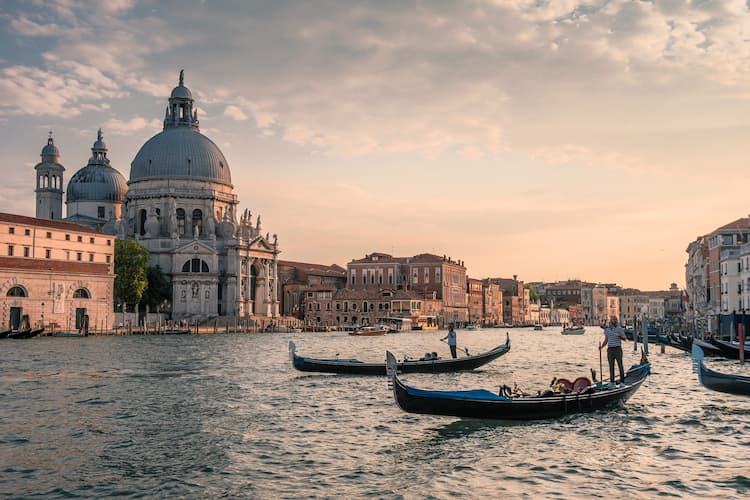Are you a digital nomad and would love to experience living in Italy? Then here’s some good news–this all time favorite holiday destination in Europe has opened its doors to remote workers around the world! Italy has approved their new digital nomad visa that allows remote workers to do business in the country and live there long term. The country is known for its upbeat and passionate society, incredible historical sites, delicious food, Alpine mountains and laid back atmosphere.

WHAT IS THE NEW DIGITAL NOMAD VISA?
The new digital nomad visa is a new type of visa that allows people to live and work in Italy as digital nomads.
It is a visa designed for non-EU residents who are highly qualified and have the ability to work remotely. The term highly qualified can apply to a variety of fields.
There has not been a published cap for this type of visa unlike other types of visas that Italy offers.
HOW TO APPLY FOR THE NEW DIGITAL NOMAD VISA
The specifics have yet to be determined but in general, to apply for a visa you must:
- Be a citizen of a country that is not part of the European Union. The European Union includes countries like Germany, and France but not countries like the United States, Canada, and South Korea.
Also, the following are usually requirements when applying for a visa but are subject to change.
- Be able to prove that you have the financial means to support yourself while in Italy (amount still to be determined)
- Not have a criminal record

WHAT APPLICANTS MUST HAVE
To apply for any visa, you usually must submit the following documents:
- A passport that is valid for at least three-six months after your intended departure from the country.
- A photo of yourself.
- A copy of your passport and visa pages.
- Pay a visa fee
*note please see your local Italian consulate for specific criteria. This is meant to describe general visa procedures.

The Best Cities to Live in Italy as a Digital Nomad
Milan
Much more than a fashion capital, Milan is vibrant, modern and urban, and it’s primarily a city for business. It is at a crossroads of being somewhat industrial, a bit overpopulated and chaotic, making it a great choice for lovers of a fast and urban European lifestyle. Because of it being crowded, it is best not to use a car to get around Milan as the city is very walkable. Instead, we recommend using a bike, public transport or walking. There’s also a lot of exhibitions, events and parties all year long, making the city very vibrant and lively.
Milan is also very well-connected, both internationally and domestically. It has a large cultural and historical heritage; and it stands as a center of fashion, finance and technology. If you ever get tired of the crowds, you can take a train to smaller nearby towns or the wonderful Lake Como.
Lake Como
Speaking of Lake Como, it is a small paradise that inspired many local and international writers to create intriguing literary masterpieces. Lake Como is sure to enchant you with its serene atmosphere and quaint town situated on the water.
It is perfect for retirees or really anyone who wants to bask in the peaceful bliss surrounding the lake, while still remaining just a 15-minutes-drive from Milan. It’s also 40 minutes by train and just five kilometers away from Switzerland.
But just because it is peaceful, it is wrong to assume Lake Como is not exciting and fun as well. It has amazing scenery, kitesurfing, biking, sailing, windsurfing and mountain trails that balance out its slow-paced lifestyle.
Pisa
West of Florence, and on the Ligurian sea, lies Pisa, a city and commune in Tuscany. Touristically famous for its leaning tower, the city is also great for expats. When comparing the costs of living between Florence, Lucca and Pisa, the latter stands out as the most affordable.
Pisa is a true gem of Tuscany, and buying property there is much cheaper than in other cities in the region. The city itself is small, but nevertheless well connected. What makes it a great choice for expats as well, is its proximity to the sea, sand dunes, pine woods and clear forests located at the nature park Marina di Vecchiano.
Sicily and the South of Italy
The south of Italy often falls into the shadows cast by the more sophisticated North, but it is unfairly so. Some of the advantages of the southern region of Italy are a laid back atmosphere, healthy lifestyle and an environment that caters to different needs.
The passion of Sicilian culture has been made famous through its depictions on many modern tv shows and movies.
Buying property in Sicily is quite affordable, and the food is fresh and organic. Locals are super friendly as well.
You should also know that the laid back lifestyle seeps into bureaucracy as well, so be prepared to wait a bit longer when dealing with paperwork. Locals also might not know English well, so it is good to pick up some Italian to get around easier.
What is The Cost of Living in Italy?
Excluding rent, a single person will need around 760 euros a month to support themselves, according to numbeo.com. For a family of four, expenses rise to 2,670 euros a month, excluding the rent.
The annual public transportation ticket costs 330 euros.
Average Monthly Net Salary (After Tax): 1,440.67 euros.
How Much is Rent in Italy?
Rent varies depending on the location and size of a unit. For example, when taking the whole country of Italy into account, a one-bedroom apartment in a city center costs 701.27 € on average, ranging from 450 to 1,300 euros. The same size apartment outside of the center costs 524.23 € on average, ranging from 350 to 900 euros.
A three-bedroom apartment in the city center is 1,342.05 € on average, ranging from 800 to 2,800 euros. A three-bedroom apartment outside of the center costs an average of 922.04 €, ranging from 600 to 1,600 euros.
BOTTOM LINE
The specifics are still being rolled out, but if you were looking for your chance to live in another country, this could be it.
If the digital nomad visa doesn’t suit your situation, you can look into the other types of visas that Italy offers. Many travelers, if their country has an agreement with Italy or the EU, are able to stay in Italy for 90 days for a vacation and other purposes.
If you have the skills and the freedom to work from wherever you want in the world, then this may be right for you. It will allow you to work as a digital nomad in Italy and explore new opportunities, meet new people, and have new experiences.




